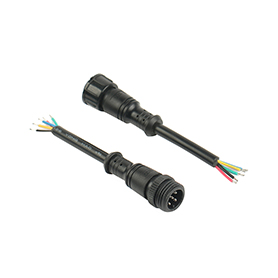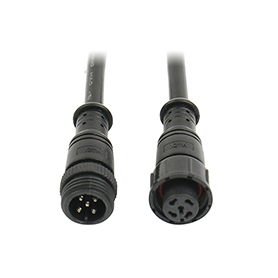News


News

IP68 vs. IP67 : Which waterproof low voltage connectors Rating is Right for Your Low Voltage System?
Release time:2025-03-15
viewed:405
When designing low-voltage systems for outdoor or harsh environments, selecting the right waterproof low voltage connectors can mean the difference between flawless operation and catastrophic failure. Two common standards—IP67 and IP68—dominate the market, but their subtle differences often lead to costly misunderstandings. Let’s demystify these ratings and reveal how to choose the best fit for your project.

The Ingress Protection (IP) code (defined by IEC 60529) classifies a device’s resistance to solids and liquids. For waterproof low voltage connectors, the second digit (liquid protection) is critical:
IP67: Protects against temporary submersion (up to 1 meter depth for 30 minutes).
IP68: Guarantees continuous underwater operation at specified depths (typically 1+ meters, often 3 meters or more).
IP67: Ideal for environments with occasional splashes or short-term flooding (e.g., heavy rain, accidental spills).
Example: Outdoor garden lights surviving a thunderstorm.
IP68: Built for prolonged submersion (e.g., underground irrigation lines, pond pumps).
Example: Submerged connectors in a fish tank LED system.
IP67: Tested under static water pressure (1 meter depth, no water flow).
IP68: Often validated with dynamic pressure (e.g., tidal forces, pressurized irrigation).
IP68 connectors typically use dual O-rings or epoxy-filled joints for long-term sealing, while IP67 may rely on single gaskets.

Outdoor Lighting Systems: Path lights, wall-mounted fixtures exposed to rain.
Temporary Installations: Event stage lighting, holiday decorations.
Indoor Humidity Zones: Greenhouses, laundry rooms.
Underground Systems: Buried landscape lighting, irrigation control wires.
Aquatic Environments: Fountain pumps, poolside sensors, marine dock lighting.
High-Pressure Washdown Areas: Food processing plants, car wash equipment.
IP67 in IP68 Scenarios:
Risk: Soil saturation in buried cables degrades connections within months.
Cost: Re-excavating a 100-meter garden lighting system costs ~$2,500.
IP68 Overkill for IP67 Needs:
Risk: Overspending on marine-grade connectors for a patio umbrella light.
Cost: IP68 connectors cost 30–50% more than IP67 equivalents.
Will the connectors face flowing water or static immersion?
IP68 for rivers, tides, or pressurized pipes.
What’s the maximum submersion depth?
Check manufacturer specs—some IP68 connectors are rated for 3m, others for 10m.
Are chemicals or abrasives present?
Bonus Tip: Pair IP68 with chemical-resistant materials (e.g., silicone seals for pH 4–12 liquids).
Prevent “False Waterproofing”:
Use dielectric grease on mating surfaces to fill microgaps.
Avoid Temperature Traps:
Ensure connectors can handle thermal cycling (e.g., -40°C to 85°C for snowy climates).
Test Beyond IP Ratings:
For saltwater applications, demand ASTM B117 salt spray testing even if IP68-certified.
Choosing between IP67 and IP68 waterproof low voltage connectors isn’t about “better” or “worse”—it’s about matching specs to your system’s liquid exposure risks. When in doubt, lean toward IP68 for buried or submerged applications and IP67 for above-ground, weather-resistant needs.